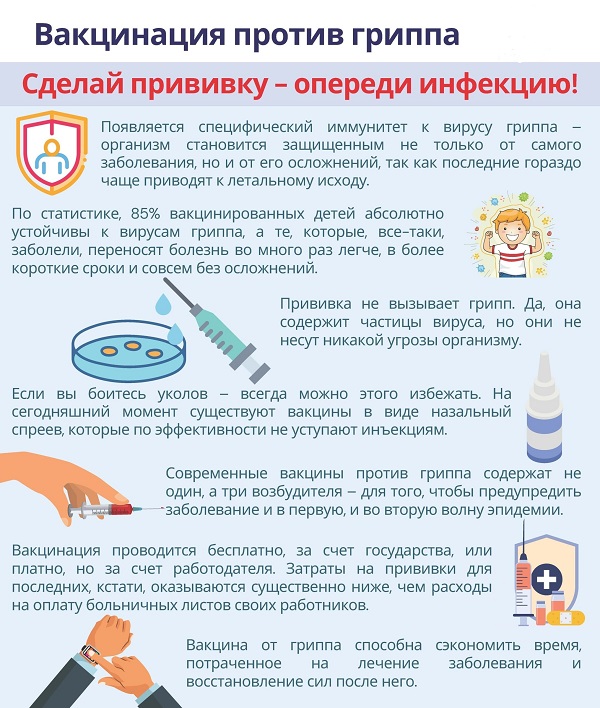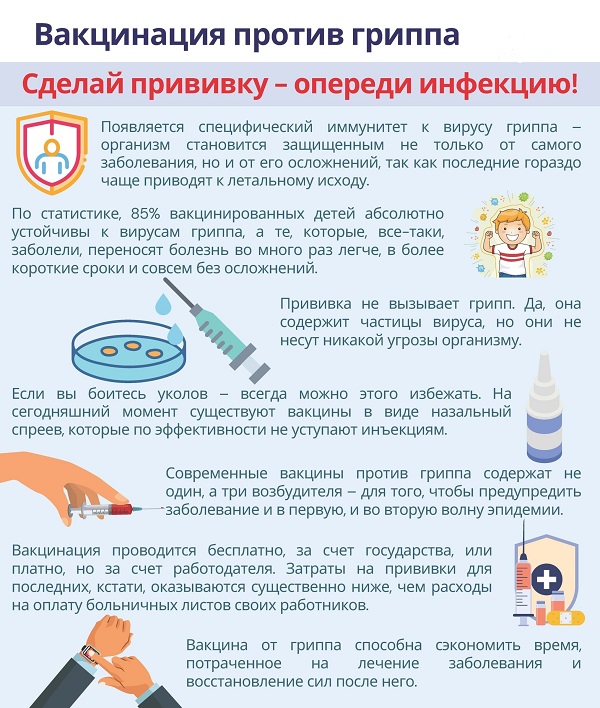THE VACCINATION CAMPAIGN AT THE ENTERPRISE HAS BEEN EXTENDED UNTIL 12/30/2023.

Vaccination has been and remains one of the reliable means of combating influenza epidemics, including in labor collectives.
Despite the fact that October-November is considered the optimal time for vaccination, it is never too late to get vaccinated!
All people are susceptible to the flu, but, first of all, children get sick, and then adults. There are several types of virus that cause influenza, and more than 200 viruses that cause acute respiratory infections. In this regard, a person can get sick several times with different forms of diseases at different periods.
First of all, it is necessary to vaccinate people from high–risk groups of the consequences of influenza - those suffering from chronic diseases, children, pregnant women.
Influenza is dangerous for its complications, such as myocarditis, pneumonia, pyelonephritis, meningitis, meningoencephalitis, otitis media, bronchitis, etc. Any flu epidemic, even of low intensity, is accompanied by the presence of deaths in the most weakened individuals, especially those over the age of 65 and in children under 1 year old. Therefore, when you get vaccinated against the flu, you take care not only of yourself, but also of your loved ones, your family.
Vaccination reduces the risk of influenza by 70-90%.
It is recommended that at least 40% of the team members be vaccinated against influenza. At the same time, two main goals are achieved. The first goal is the individual protection of the vaccinated person. The second goal is the formation of collective immunity among workers. Collective immunity provides an additional degree of protection to vaccinated people and reduces the likelihood of disease among unvaccinated members of the team. The more vaccinated, and therefore protected from the flu, the lower the probability of the virus being introduced and spread among those working in the team, as well as the probability of "bringing" the disease into the family.
With coverage of less than 40% of employees, collective immunity practically does not work.
